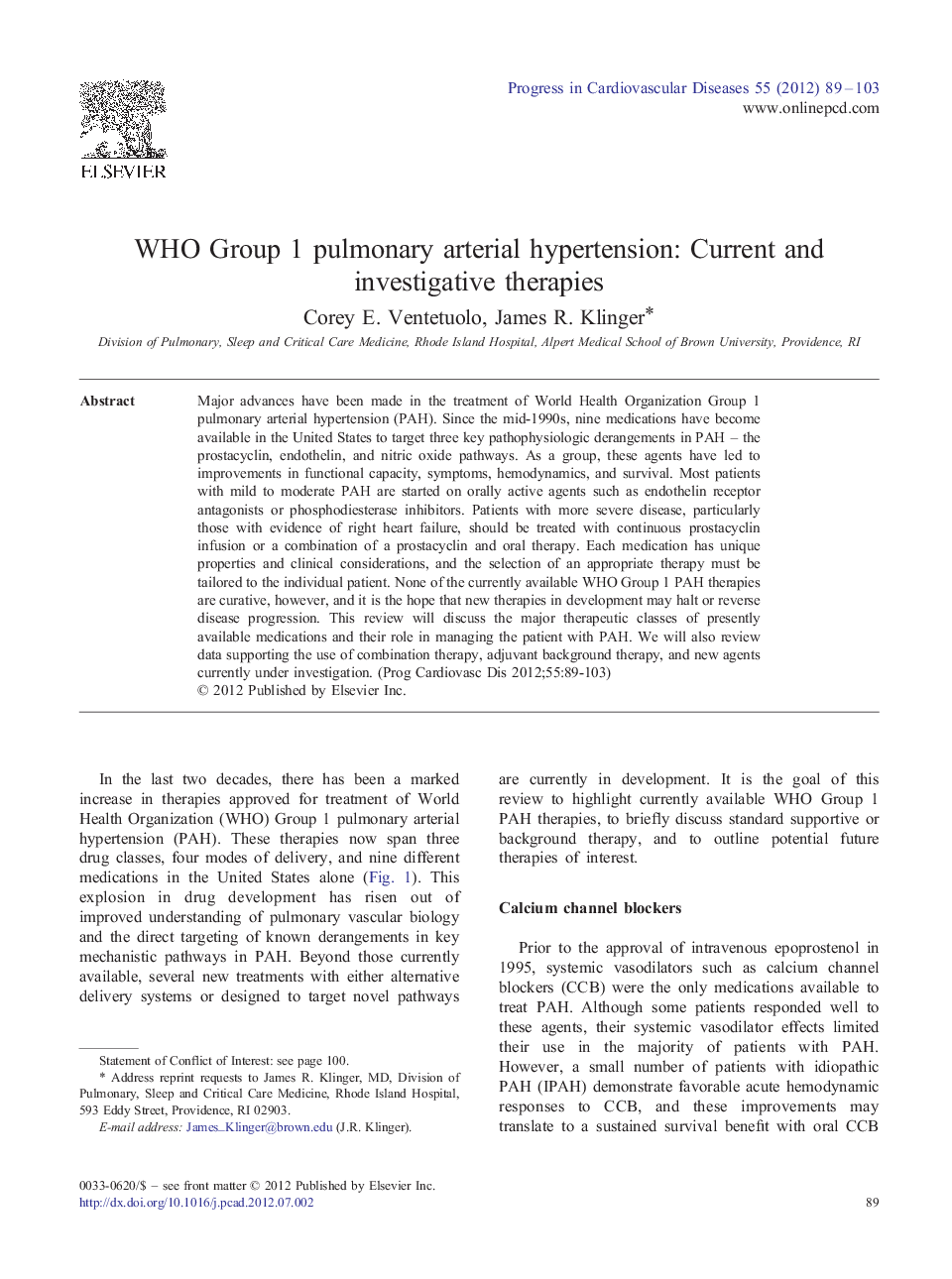| Article ID | Journal | Published Year | Pages | File Type |
|---|---|---|---|---|
| 3006762 | Progress in Cardiovascular Diseases | 2012 | 15 Pages |
Major advances have been made in the treatment of World Health Organization Group 1 pulmonary arterial hypertension (PAH). Since the mid-1990s, nine medications have become available in the United States to target three key pathophysiologic derangements in PAH – the prostacyclin, endothelin, and nitric oxide pathways. As a group, these agents have led to improvements in functional capacity, symptoms, hemodynamics, and survival. Most patients with mild to moderate PAH are started on orally active agents such as endothelin receptor antagonists or phosphodiesterase inhibitors. Patients with more severe disease, particularly those with evidence of right heart failure, should be treated with continuous prostacyclin infusion or a combination of a prostacyclin and oral therapy. Each medication has unique properties and clinical considerations, and the selection of an appropriate therapy must be tailored to the individual patient. None of the currently available WHO Group 1 PAH therapies are curative, however, and it is the hope that new therapies in development may halt or reverse disease progression. This review will discuss the major therapeutic classes of presently available medications and their role in managing the patient with PAH. We will also review data supporting the use of combination therapy, adjuvant background therapy, and new agents currently under investigation.
